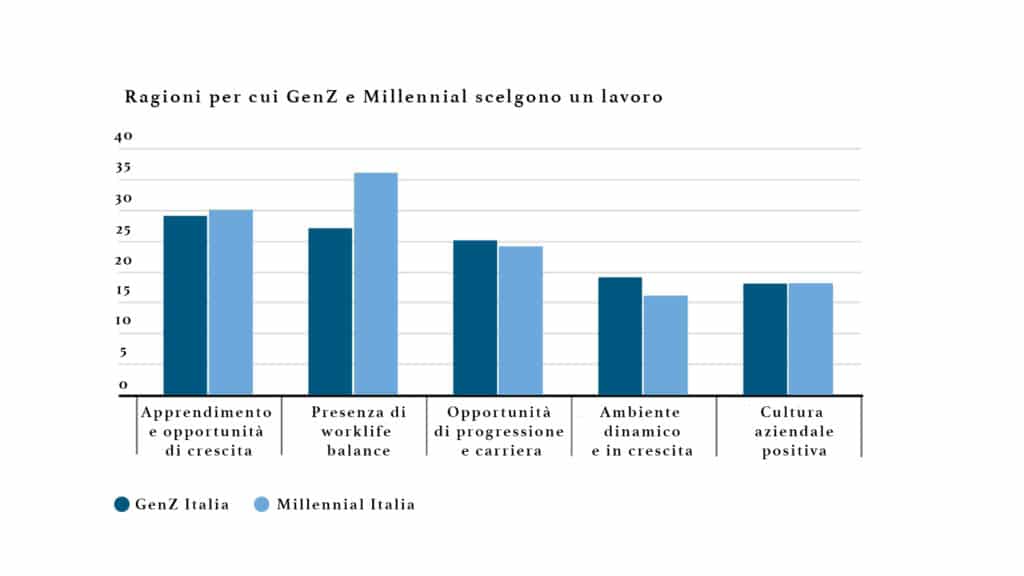Social media are the mirror of our society, unfortunately, or fortunately. Increasingly, accounts on various social networks denounce realities, trends, or new tendencies in mainstream culture.
Thus, this year, a short 17-second video showed on Tik Tok a new face of the working world, revealing a reversal of priorities for a generation that is seeking a new principle of serenity and becoming the subject of various articles in prestigious magazines, such as TIME or the Wall Street Journal.
“The reality is that work is NOT your life. Your worth is not defined by the output you produce” @ zaidleppelin, TikTokker (“The reality is that work is NOT your life. Your worth is NOT defined by the output you produce.”).
A Neologism
We are talking about the phenomenon of quiet quitting, a term coined on Tik Tok, precisely, in which so many of Generation Z (but not only) mirror themselves. The most social expression of recent months means “quitting quietly” or, more loosely, “quitting without quitting,” but this trend has nothing to do with quitting, on the contrary…
Quiet quitting does not mean quitting one’s job, but, as opposed to Stakhanovite, it means showing up at the office and doing the bare minimum, doing nothing more than one’s tasks and duties. In short, quiet quitting means not taking on extra work or not reading emails outside of work hours and avoiding all the stress and frenzy that in the worst cases even leads to burnout.
There is a growing need to create a work-life balance, and the younger generation is no longer willing to sacrifice the latter.
Comparing Generations
The generational clash is substantial, and while for the younger generation this attitude is the antidote to work frenzy, for the older generation it is a lack of ambition and indolence. Indeed, the decline in resource involvement is associated with a lack of satisfaction on the part of more senior figures.
However, it is fair to ask, if resources are only fulfilling their tasks without exceeding their working hours, how come their managers are disappointed with their performance anyway?
Let’s be clear, in the now-viral videos, there is no suggestion of not working or merely warming the chair, but of working only the hours for which one is paid. Discontent on the part of leadership is caused by a lack of motivation to participate in work with creative or innovative contributions.
For a long time we have lived in a culture in which the individual is identified with his or her professional life, punctuated by hard, tight and hectic rhythms. The so-called hustle culture is nothing more than this: becoming so immersed in one’s work life that one no longer has time to do anything else, to the point of devoting one’s entire existence to one’s professional career.
However, the concept of quiet quitting originated on Tik Tok but does not end on social. In fact, according to Gallup’s State of the global workplace 2022 report, only 14 percent of resources in Europe are genuinely engaged in their work. This worrying figure is indicative of how there is a lack of balance between personal and career aspirations at various levels within organizations and not just among younger resources.
But while Millennials in the face of work frenzy are willing to quit their jobs on the spot, younger people prefer a silent rebellion, fought with apathy and passivity.
According to 2022 research by Deloitte Italy, globally, the two main reasons for discontent at work are low wages and little attention to mental health. However, in Italy, the factors are different. resources under 40 seek work life balance and opportunities for learning and growth. The former is especially important for Millennials: for 36 percent of them, in fact, finding a work environment that provides an adequate work-life balance is the first factor of choice when looking for a new job.

Quiet quitting is a process
The issue of losing motivation to work is undoubtedly connected to many organizational and individual aspects of people and their growth within a business context. The challenge facing HR and managers with people management responsibilities is how to skillfully conduct the entry, growth, and eventually exit of resources.
Underlying the motivation is a simple but crucial question that persists at all stages of a person’s growth within the organization: are we a good match? The root of this question lies in the recruiting process, the main difficulty of which is finding a happy match between the person and the role to be filled. Subsequently, it becomes a question of how to grow in harmony together.
Although a mass phenomenon, quiet quitting is always an individual psychological process of the person suffering from something: from not receiving enough stimulation, from not feeling rewarded, from lack of compensation for extra hours, from performing a position that does not interest them enough, from living within an organizational culture that does not suit them.
The individual, at some point, moves beyond the feeling of discomfort. Quiet quitting is primarily a process of the individual losing faith in the organization; that things can change for the better and that he or she has the strength and knowledge to change the status quo that creates frustration.
How do you avoid quiet quitting in your team?
But in addition to being an individual drama, quiet quitting, according to various studies, is also a symptom of a failing organization.
In fact, according to the Harvard Business Review, the prevalence of quiet quitting is closely linked to the inability of managers to make business goals coexist with the individual and collective well-being of their employees.
According to data compiled by the renowned journal, quiet quitting is not a phenomenon related to employees’ tendency to work harder or slower, but to leaders’ ability to create a stimulating dialogue relationship with their resources.
The first step against quiet quitting might be to question one’s leadership ability by asking oneself: is this a problem with my resources or a problem with me and my leadership skills?
Conscious leadership is based on trust, first by establishing positive and purposeful relationships with one’s resources in which commonalities unite, while differences are stimuli for reflection and comparison.
Second, an important element is consistency and honesty. The good leader must keep his or her promises. It has been found that most senior figures believe they are more consistent than their resources perceive. In this sense, continuous investigation of one’s self and one’s behaviors and actions is important.
What behavioral skills do leaders need against quiet quitting?
People often blame quiet quitting on the laziness of their resources, but according to the “State of the global workplace 2022” study, poor leadership is at the root of this phenomenon.
Good leadership lives and persists in a space where the team feels energized and psychologically secure. To this end, the leader will need to develop very specific behavioral skills: that of listening, ’emotional intelligence and assertiveness. By paying real attention to his or her people, the leader will be able to understand the malaise of resources, while at the same time being able to motivate his or her resources to invest more time, energy, and creativity to the work at hand.

Does the chicken or the egg come first?
While social media have made visible a phenomenon that seems particularly present in the younger generation, it must also be said that loss of motivation or disinterest in giving one’s all is not something new within organizations. From time immemorial, those in top positions have been faced with the challenge of motivating and engaging people to achieve excellence.
However, each generation is a child of its own era, and trends, values, and even our reactions to what happens arise in relation to the world we live in.
While social media denounces phenomena of our age, it is fair to ask: the phenomenon was denounced or created by social?
Indeed, social media have great power in spreading new ideas and currents and are to be seen as a powerful force influencing the relationship people have with work, especially with regard to the younger generations who experience these dimensions particularly passionately.
So let’s ask ourselves whether quiet quitting is really such a phenomenon in our younger generations, or whether, thanks to social media, it is spreading these very months and what does this mean for the management challenges of the coming years?





